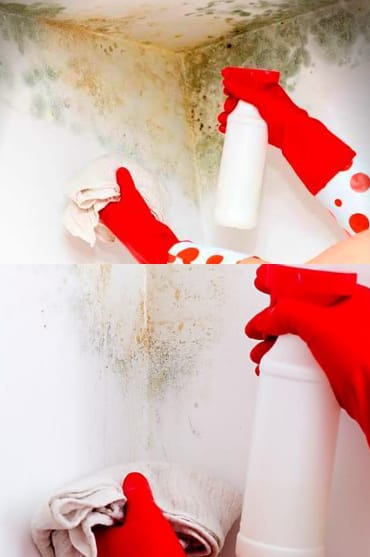
Mould is a phenomenon that affects many homes and can grow in your home without you even realising it. This is because mould appears in damp, warm and dark places, often hidden from view.
Once established, mould is difficult to eradicate and, if all the conditions are met, can develop very quickly, sometimes within 24/48 hours. Therefore, if the problem is not treated in time, the risk of developing respiratory diseases, asthma or allergies may arise.
Mould on the wall:
Check out our tips on how to get rid of mould and prevent it from returning, as it not only damages your home, but can also cause health problems.
How to Remove mould in the home?
Diluted bleach: Sarah Dempsey, a British cleaning expert, told the Express newspaper that families can use diluted bleach sold in stores to remove any traces of mould. She added that, however, this chemical should be avoided on some surfaces.
If you do choose to use this potentially toxic product, make sure you wear protective gloves and ventilate the room properly while doing so. Then let the product work and clean.
White Vinegar:
Another less chemical solution that is just as effective is to use a vinegar solution. White vinegar cleans, deodorizes, and disinfects thanks to its acetic acid content. Whether on a porous or non-porous surface, vinegar can also kill 82% of mold species, including black mold.
Pour undiluted white vinegar into a spray bottle without adding water, as this will make it less effective. Next, spray the vinegar on the moldy surface and let it sit for an hour.
Finally, rinse the affected area with water and let it dry. Although the vinegar smell will eventually go away within a few hours, you can add a few drops of essential oils with the scent of your choice, such as lavender or lemon, if the vinegar smell is unpleasant to you.